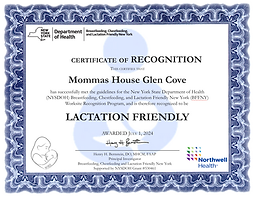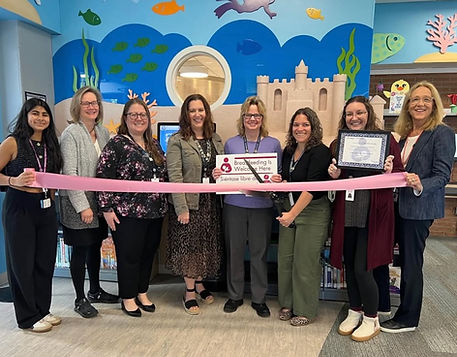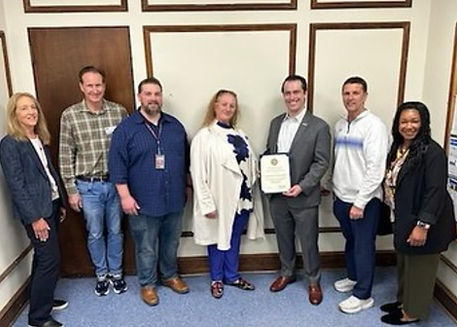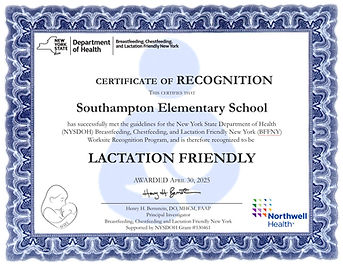Empowering parents to breastfeed every step of the way
Worksites
Worksites are recognized for being lactation friendly by the BFREE Team at Northwell Health. There are many reasons for employers to foster a breastfeeding/chestfeeding friendly environment for their employees and it is often easier to support employees than you might think!
*Partners are not expected to begin this process without assistance and resources from the BFREE Team
Return on Investment:
(U.S. Department of Health and Human Services, Health Resources and Services Administration, Maternal and Child Health Bureau)
-
Breastfeeding/chestfeeding employees miss work less often. As human milk fosters a better immune system, breastfed/chestfed infants are often healthier and parents generally need to leave work less often to care for sick children.
-
Breastfeeding/chestfeeding lowers health costs. Reduced healthcare costs for breastfed/chestfed infants means lower medical insurance claims for businesses.
-
A lactation support program can yield substantial dividends. A few of these important dividends include lower turnover rates, higher productivity and loyalty, and positive public relations. Employees are more likely to return to work after childbirth when their employer supports their decision to breastfeed/chestfeed, eliminating the costs of hiring temporary staff or recruiting, hiring, and training replacement staff. Employers who provide lactation support also improve morale and job satisfaction as well as public image.
Steps to Support:
(U.S. Department of Health and Human Services, Health Resources and Services Administration, Maternal and Child Health Bureau)
-
Provide a Private Space. In compliance with the Fair Labor Standards Act (FLSA), the space must not be a bathroom and should be free from intrusion. Nursing parents in these spaces should also have access to an electrical outlet and running water.
-
Provide flexible breaks and work options. Employers can support their employees by ensuring they have flexible breaks and a reasonable amount of time to express milk. People often need about 20 minutes to express milk every 2- 3 hours. Most are able to use their regular breaks or meal period and will clock in and out as usual. You can learn more about the laws in NYS that apply to break time here: https://dol.ny.gov/breast-milk-expression-workplace
-
Provide education. Employer-provided information and resources accessible through the work site help prepare parents for balancing the requirements of breastfeeding/chestfeeding with their job responsibilities. These resources are also beneficial to expectant spouses/partners.
-
Provide support. A positive, accepting attitude from colleagues helps employees build confidence in their ability to continue working while breastfeeding/chestfeeding.
For additional guidance, this self-assessment was developed to help guide and assist worksites in improving their lactation policies and procedures.


Exchange Ambulance of the Islips Corporation

Mommas House (Glen Cove and Levittown)




Lindenhurst Memorial Library


PM Pediatrics North Babylon


Southampton High School


South Hampton Intermediate School


South Hampton Elementary School


Centro Corazón de Maria


Hispanic Counseling Center


Jones Beach Theater
-
Making It Work Toolkit for Employers: This resource assists employers in complying with state and federal laws and explains the basic needs of employees, common sense solutions, resources, and FAQs. A checklist for employers is included which assists supervisors plan for employee requests for lactation accommodations.
-
Business Case for Breastfeeding: This is a comprehensive program designed to educate employers about the value of supporting breastfeeding employees in the workplace. The program highlights how such support contributes to the success of the entire business. The Business Case for Breastfeeding offers tools to help employers provide worksite lactation support and privacy for breastfeeding mothers to express milk.
-
Support for Breastfeeding in the Workplace: The Centers for Disease Control and Prevention (CDC) Guide for Breastfeeding Interventions provides the rationale and evidence of effectiveness for workplace support programs.
-
Lactation Break Time and Space in All Industries: The Office on Women's Health guide to solutions and specific options for supporting nursing mothers in different job settings.
.png)


